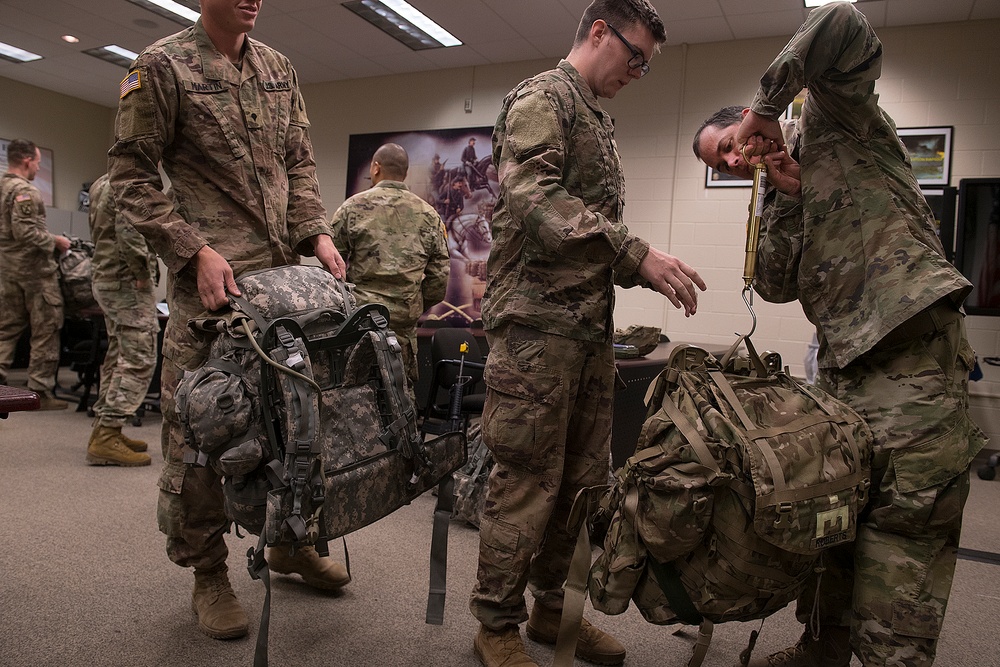
Staff Sgt. Brandon Thomason, the 19D course NCOIC, begins weighing all the trainee's rucks at the beginning of class before loading up into the school van and driving out to the track. The second day of class began with a 12-mile ruck march in the morning. The scout trainees were required to carry a 36-pound ruck along with a rubber duck - a non functional weapon made of rubber, and wear their body armor.
The job of a Cavalry Scout is to operate as one of the first personnel in an area. These soldiers are quite literally the first line of defense for Army units. Cavalry Scouts engage the enemy with anti-armor weapons and scout vehicles in the field, track and report enemy movement and activities, and will direct the employment of various weapon systems onto the enemy.
U.S. Army Cavalry Scouts act as the eyes and ears on the field, gathering information about enemy positions, vehicles, weapons, and activity. With the information they gather, commanders can make informed decisions about how to move troops and where and when to attack. Their scouting duties include conducting mounted and dismounted navigation, collecting data about tunnels and bridges, and serving as members of observation and listening posts. In addition to basic soldiering skills, cavalry scouts learn to secure and prepare ammunition on scout vehicles, load, clear and fire individual and crew-served weapons, perform navigation during combat, and how to collect data to classify routes, tunnels and bridges. And they train and supervise scout vehicle crew members.
| Date Taken: | 11.02.2020 |
| Date Posted: | 12.28.2020 11:11 |
| Photo ID: | 6468598 |
| VIRIN: | 201210-Z-XK920-0011 |
| Resolution: | 2700x1800 |
| Size: | 4.4 MB |
| Location: | BOISE, IDAHO, US |
| Web Views: | 30 |
| Downloads: | 10 |

This work, Scout Training - Week 1: part 1 [Image 20 of 20], by Thomas Alvarez, identified by DVIDS, must comply with the restrictions shown on https://www.dvidshub.net/about/copyright.